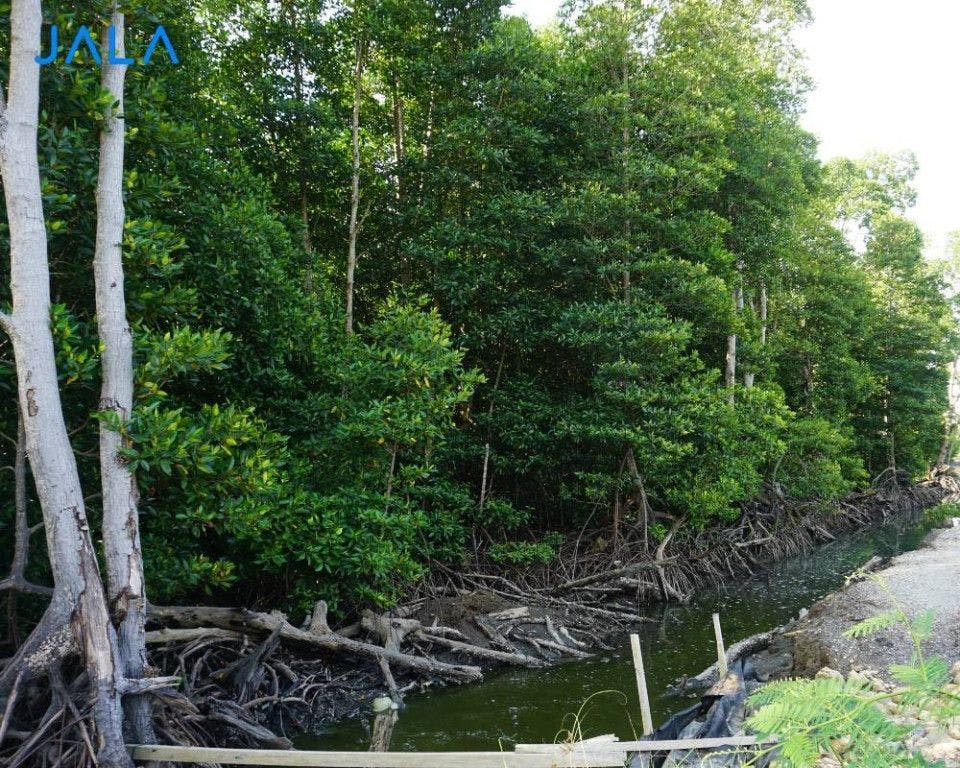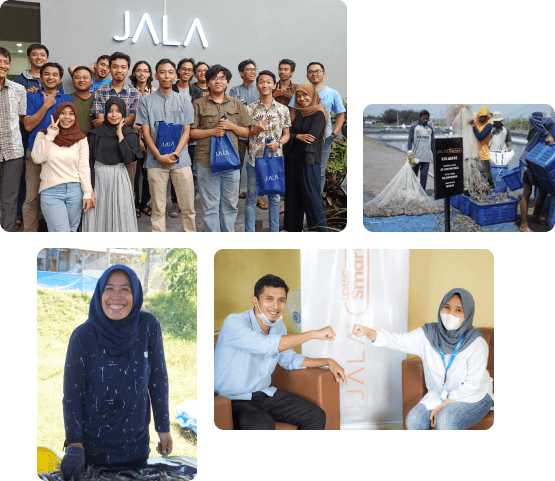
Silvofishery, also known as aquasilviculture, silvo-aquaculture, or wanamina, is a cultivation method that integrates brackish water farms with mangrove forests without requiring the removal or conversion of existing mangrove forests. Silvofishery has come to light again since the “shrimp fever” in the 1980s which caused a significant loss of mangrove forests in Southeast Asia. The irresponsible clearing of lands for farms by destroying mangrove forests is the primary factor of the global decline in mangrove forest areas.
Since the 1900s, coastal communities in the Philippines have reportedly implemented the silvofishery method. They planted mangrove trees of the species Rhizophora sp., Sonneratia sp., and Nypa fruticans to protect the ponds from soil erosion due to storms and sea tides. In Indonesia, this method has been practiced since the 1970s using Rhizophora sp. dan Avicennia sp. which are planted around farms and afterward utilized as protection against erosion, firewood, and organic substrates. Silvofishery enables the development of highly productive habitats while preserving natural sustainability.
The silvofishery practice also aims to minimize feed and medicines inputs into ponds, hence lowering the risk of contamination and waste accumulation. Mangrove forests also serve to purify water and maintain water quality. Farms that have mangroves around are very likely to have a water supply that meets the required standards. In addition, mangrove forests can dispel nutrient and sediment wastes from water discharges.
The following are examples of the silvofishery practice in various countries:
- Hong Kong implements gei wai, the silvofishery for traditional farms which was practiced after the Second World War. Shrimp fry and their feed are obtained from the nearby waters which are teeming with mangrove forests. After harvest, gei wai is dried and the small shrimp left behind become food for migratory birds.
- Indonesia implements several silvofishery systems, such as empang parit (pond trenches) and komplang. Empang parit have a distinctive feature of having a mangrove forest in the center of the pond, while komplang farms have the feature of having a farm right next to the mangrove forest.
- Vietnam implements an integrated aquaculture system that combines shrimp farming with mangrove forest rehabilitation which is done simultaneously in Cà Mau and the delta of the Mekong River.
Silvofishery has again become a hot topic of discussion for environmentally friendly, sustainable, and productive aquaculture solutions because shrimp farming practices generate waste that pollutes the environment and is occasionally too much for the environment to handle naturally. In addition, many customers are starting to consider the welfare of the shrimp on their plates, starting with how the shrimp are handled while in the farm and continuing through to how the shrimp are harvested. Silvofishery may therefore be the best solution for shrimp farming that balances economic benefits with environmental sustainability.
References:
Bunting, Stuart W. (2013). Principles of Sustainable Aquaculture: Promoting Social, Economic, and Environmental Resilience. Oxford, UK: Routledge.
Leung, Ping Sun, Cheng-Sheng Lee, & Patricia J. O’Bryen. (2007). Species and System Selection for Sustainable Aquaculture. Iowa, US: Blackwell.
Mustafa, Saleem & Rossita Shapawi (Eds). (2015). Aquaculture Ecosystems: Adaptability and Sustainability. West Sussex, UK: John Wiley & Sons.
SilvoFishery | silvofishery.com
About the Author
Dhimas Upadyandaru is a Market Analyst at JALA and a bachelor graduate of Oceanography from the Bandung Institute of Technology. He has conducted research with the Center for Coastal and Marine Resources Studies in The Bogor Agricultural University and has a high interest in aquaculture, fisheries, marine, and geospatial, both from a scientific and business aspect.





